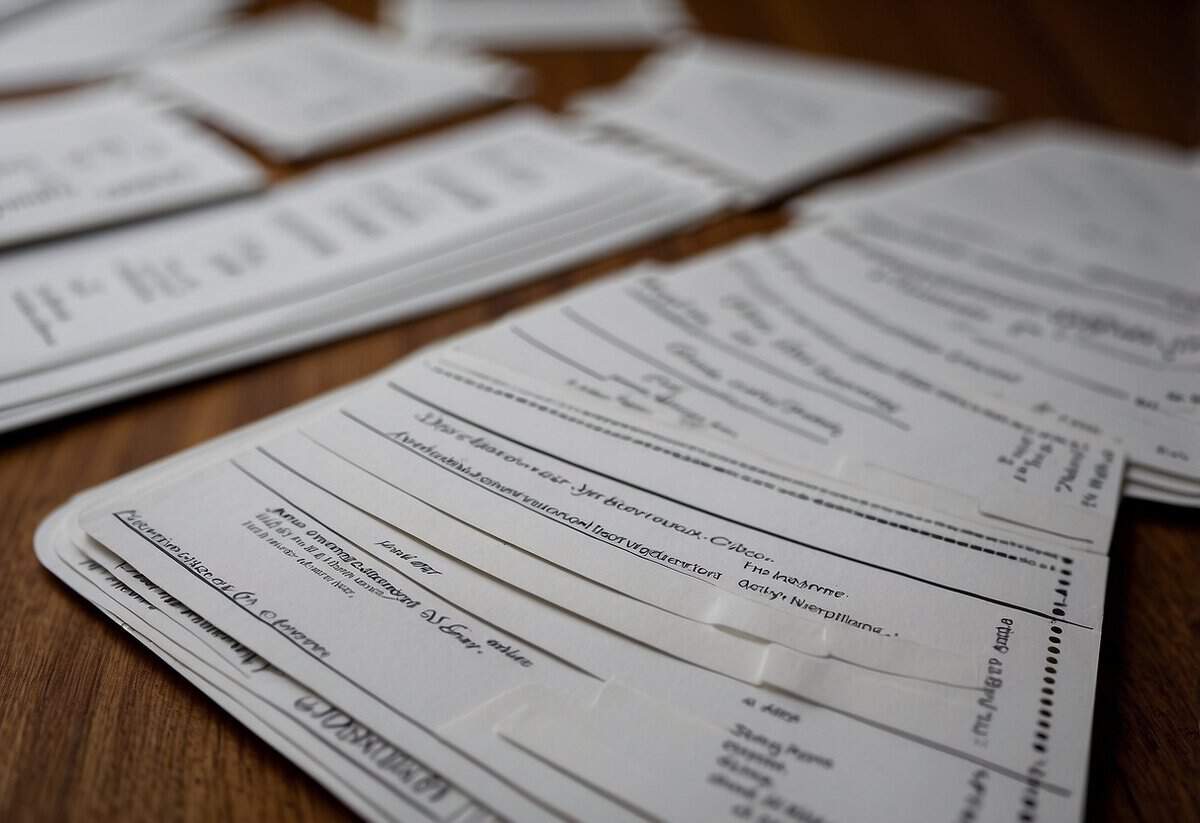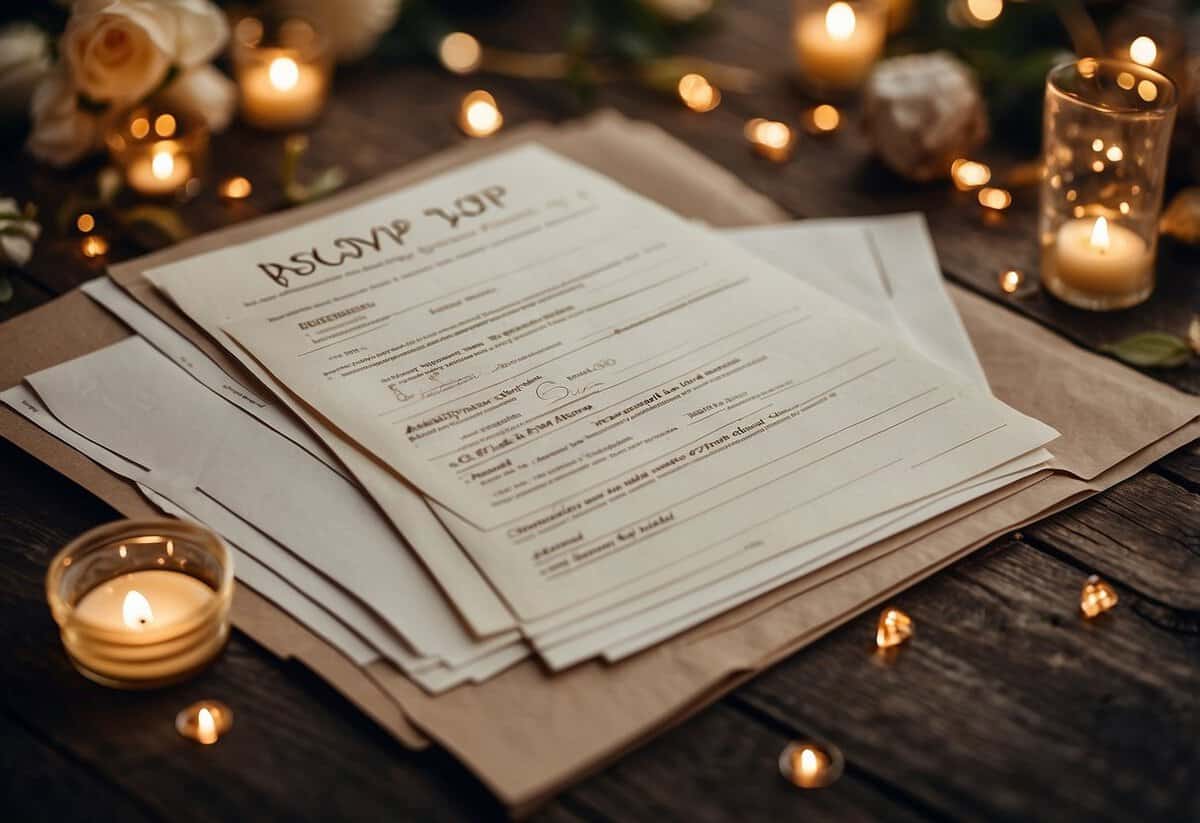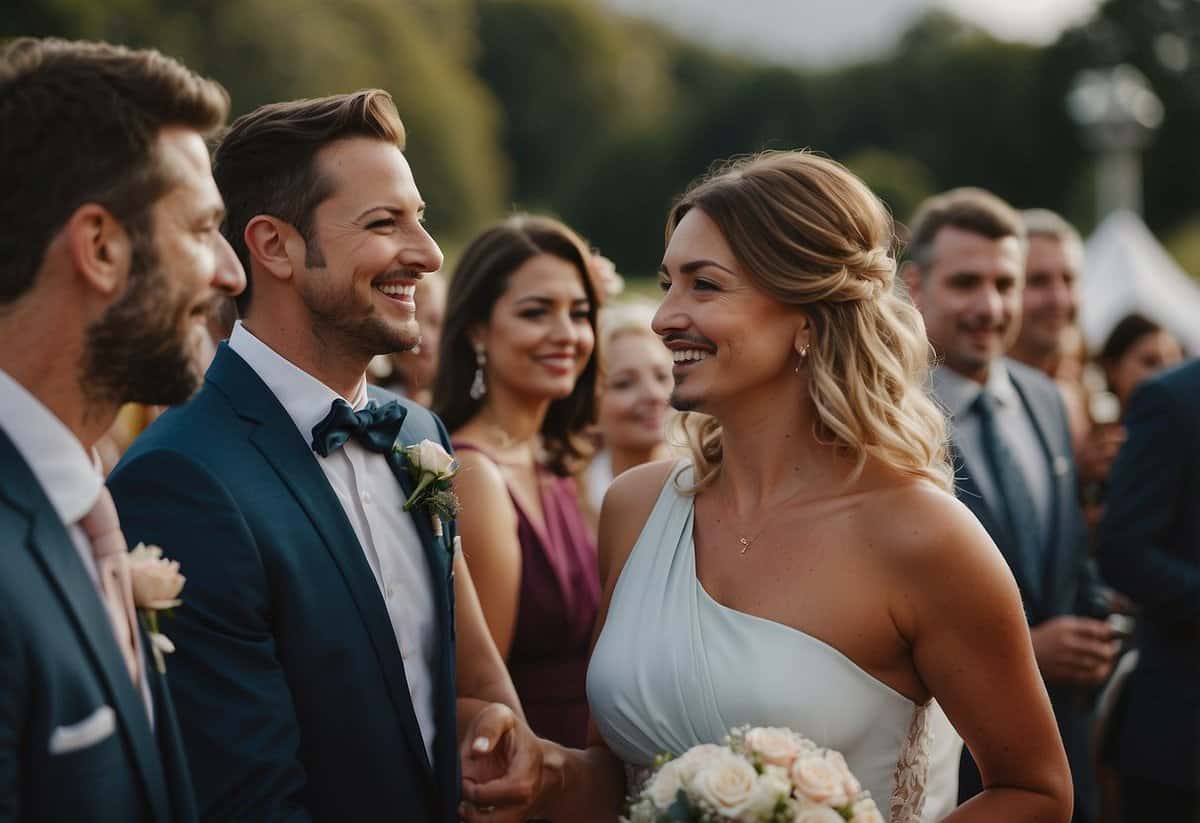How Many Declines to Expect for a Wedding? Tips for Planning
Planning a wedding involves a lot of moving parts, and managing the guest list can be one of the trickiest aspects. When it comes to sending out invitations, one burning question might be on your mind: how many declines should you expect for a wedding? On average, about 20% of wedding guests will decline your invitation. This means if you invite 100 people, you can expect around 80 to 85 guests to RSVP “yes.”

There are several factors that can affect the number of declines you receive. For example, location plays a big role; destination weddings often see a higher percentage of declines compared to local events. The time of year and your guests’ personal schedules also come into play. Considering these aspects can help you better estimate how many people will actually attend your big day.
Understanding these patterns can ease some of the stress that comes with planning your guest list. With this knowledge, you can make more informed decisions about your venue, catering, and overall event planning.
Understanding RSVP and Attendance Rates

RSVP and attendance rates are crucial for wedding planning. Knowing how many guests to expect helps in arranging seating, catering, and other logistics. Here we explore the significance of RSVPs and average attendance rates for various wedding sizes.
The Significance of RSVPs in Wedding Planning
RSVPs play a vital role in planning your wedding. They help you determine who will attend and make necessary arrangements. Without accurate RSVPs, you may face issues like over or under catering or insufficient seating.
Tracking RSVP responses can be done using apps or wedding websites. These tools make it easier for guests to confirm their attendance. About 83% of guests typically accept wedding invitations, while around 17% decline, affecting planning significantly.
Factors such as the wedding location, date, and formality of the event can influence RSVPs. Knowing these factors can help you anticipate the number of attendees more accurately.
Average Attendance Rates for Different Wedding Sizes
The percentage of guests attending your wedding varies by the size of your guest list. For small weddings with 50-100 guests, you might see acceptance rates around 85%. Mid-sized weddings with 100-200 guests often have an acceptance rate of about 75-80%.
For larger weddings with over 200 guests, the acceptance rate tends to lower, averaging around 70%. This can be due to travel constraints, larger social circles, and other commitments.
Understanding these rates helps in planning costs and logistics. Accurate RSVP tracking ensures you are well-prepared for your special day.
Factors Impacting Guest Declines

When planning your wedding guest list, consider various factors that might lead to guests declining your invitation. These include the location and venue, timing and scheduling conflicts, and personal and financial considerations that can affect guests’ ability to attend.
Roles of Location and Venue
The location of your wedding can greatly impact attendance. If you choose a destination wedding, the travel requirements may be too much for some guests. Even local venues in hard-to-reach areas might see fewer RSVPs.
Transportation can also be an issue. Guests may have trouble finding convenient or affordable options to get to the event. Accommodations are another important factor. Venues without nearby hotels or lodging options can make it difficult for out-of-town guests to attend.
Choosing a venue that is easily accessible and offers nearby accommodations can help increase the number of guests able to attend.
Timing and Scheduling Conflicts
Timing is critical when sending out wedding invitations. Timing and scheduling conflicts like other significant life events or holidays can result in more declines.
Weekday weddings might be harder for guests who have work or school commitments. Similarly, weddings during major holidays might conflict with family plans or travel. You’ll want to consider the time of year and be mindful of peak seasons which might be busy for many people.
Planning your wedding on a weekend or giving guests plenty of notice can help mitigate these conflicts and increase attendance.
Personal and Financial Considerations
Personal circumstances play a big role in whether guests can attend your wedding. Financial strain, for instance, might prevent someone from being able to afford travel, gifts, or accommodations. Also, relationships and personal obligations could impact their decision.
It’s important to consider these factors, especially if your guest list includes individuals from different financial backgrounds. Even if your wedding is local, the cost of attending might still be prohibitive for some.
Offering options such as a wedding website with accommodation details, potential travel discounts, or understanding guests’ limitations can promote greater guest attendance.
Managing Your Guest List and Invitations

It’s crucial to structure your guest list effectively and design your invitations to ensure you have a smooth planning process. Here’s how you can manage both aspects directly and efficiently.
Crafting an A List and B List
To manage RSVPs effectively, create an A list and a B list. Your A list includes close family and friends you absolutely want to attend. This list should be your top priority.
The B list includes guests you would like to invite if there is room. By separating your lists, you can send out invitations in waves. Send A list invites first and wait for their RSVPs. If some A list guests decline, you can then send out invites from your B list.
This method helps to ensure any last-minute RSVPs from the B list can be managed without overloading your capacity.
Designing Invitations for Maximum Impact
Your invitations set the tone for your wedding. They should be clear and inviting. Include all necessary details like date, time, location, dress code, and RSVP instructions. You’ll want them to be beautiful but also informative.
Consider digital RSVPs to make it easier for guests to respond quickly. Whether you’re going for traditional or electronic invites, ensure your design aligns with your wedding theme.
Use bold text and contrasting colors for essential details. This helps make sure nothing important gets overlooked. Design your invitations to be both visually appealing and highly functional.
Being clear and organized in your invites will help you manage your guest list effectively and avoid any confusion or miscommunication.
Logistics of Guest Count and Venue

When planning your wedding, understanding the guest count and choosing a suitable venue are crucial steps. These elements affect your budget, seating, and overall guest experience.
Determining the Size and Scale of Your Wedding
First, you’ll need to decide how large or small you want your wedding to be. If you are considering a large wedding, aim for a guest headcount of 150 or more. Smaller weddings typically have fewer than 100 guests. Family size, your circle of friends, and your budget all play roles in this decision.
Understand that guest attendance rate can impact your planning. On average, about 20% of invited guests tend to decline, regardless of the wedding size. Keep this in mind when making your guest list, which means if you invite 100 people, you can expect around 80 to attend.
Consider whether you are hosting a destination wedding or if there will be many out-of-town guests. These guests might have a harder time attending, potentially increasing your decline rate. Adjust your estimates accordingly to avoid surprises.
Venue Choices and Guest Comfort
Your venue should comfortably accommodate your guest list. For smaller weddings, cozy venues like historical homes or gardens could create a more intimate feel. Large weddings might need ballrooms or hotels with expansive spaces.
Take into account your guests’ comfort. For outdoor weddings, ensure there’s adequate seating, shade, and shelter options in case of unexpected weather. For indoor events, check if the venue has good ventilation and comfortable seating.
Location is key, too. Local venues are often easier for guests to reach, reducing the number of declines. Out-of-town guests may appreciate nearby accommodation options. Think about parking availability and accessibility to make sure everyone can arrive easily and on time.
By carefully considering your guest count and venue, you can ensure everyone has a memorable and comfortable experience on your special day.
Enhancing Guest Experience and Participation

Successful wedding planning involves making sure your guests feel valued and informed. Clear communication and thoughtful accommodations can significantly boost your attendance and participation rate.
Communicating with Guests Effectively
Start by sending out the invitations well in advance. This gives your wedding guests enough time to make arrangements. Ensure your invitation includes all necessary details, such as the venue, date, and time.
Utilize a wedding website to share updates, RSVP options, and your registry. This centralized hub helps guests access information easily.
Follow up with those who haven’t responded by the RSVP date. A gentle reminder can help you finalize your guest list and improve your RSVP response rate.
Finally, keep conversations open during your wedding planning process. Encourage guests to reach out with questions or concerns.
Providing Necessary Accommodations and Information
Consider your guests’ comfort and needs. If you have out-of-town guests, provide information on local hotels and transportation options. This not only helps them plan their stay but also ensures they arrive on time.
For a seamless experience on the wedding day, include detailed directions and parking information. You can also offer a shuttle service if the venue is hard to reach.
Lastly, offer special accommodations for those who need them. This could include dietary restrictions, accessible seating, or childcare services, making sure everyone feels included.
By focusing on these aspects, you’ll create a memorable experience that encourages higher participation and enjoyment for all your wedding guests.


